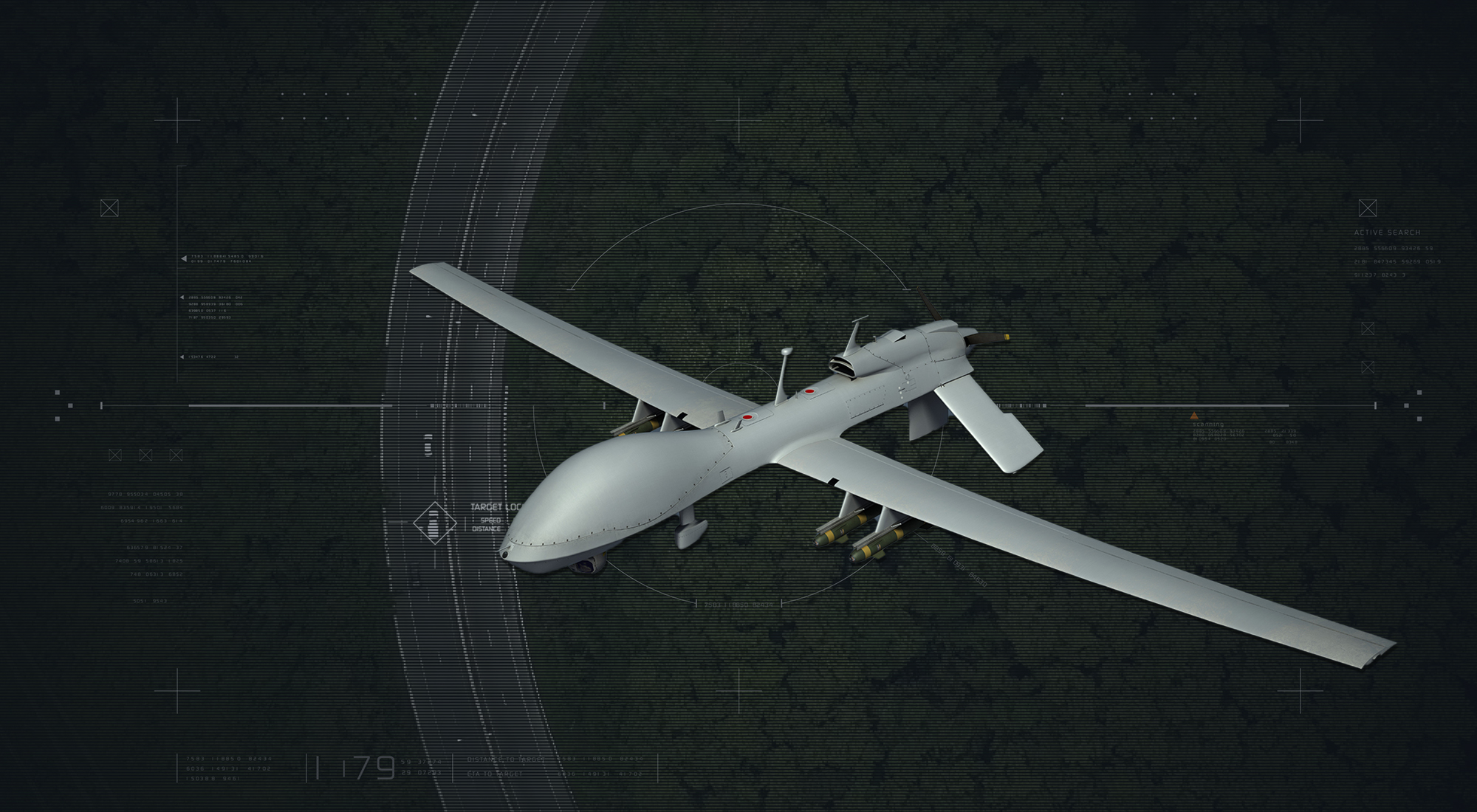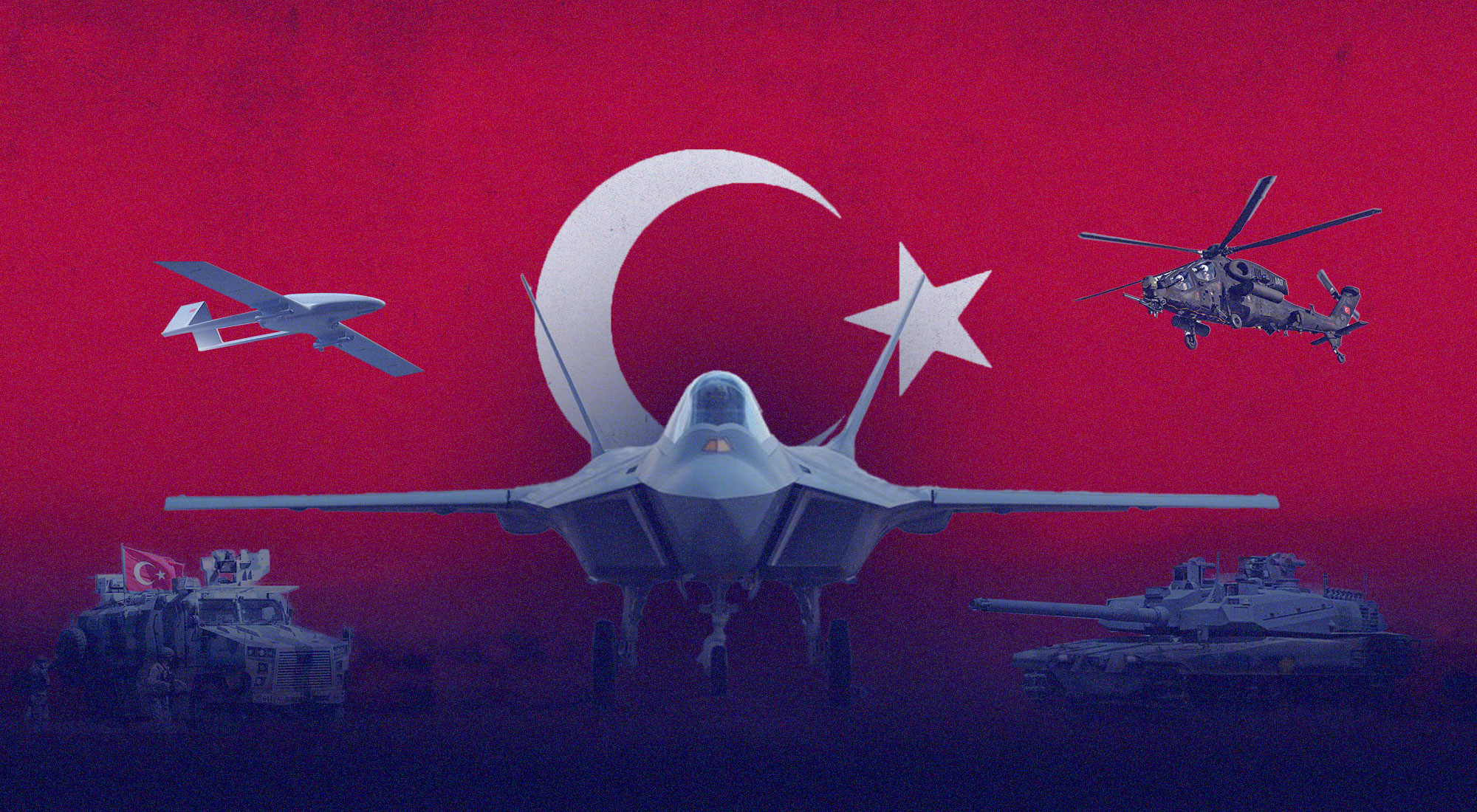Every conflict brings new technologies. The First World War brought the tank, the Second World War brought tactical aviation, and the endless wars of decolonization brought asymmetrical warfare. Ukraine will soon go down in history as the conflict that made the use of drones on the frontlines commonplace,[1] with a plethora of models, given the uniqueness and versatility of the tool, but with such efficiency that the belligerents could no longer do without them. The return of total war to the Old Continent has confirmed that drones are not gadgets, or the whims of engineers hungry for funding. They are real weapons, taking us into what the U.S. Army calls the “era of contested equality,”[2] which defines the moment when technology replaces previous methods of combat. For drones, this is expected to occur between 2035-2050.
While the war in Ukraine is emblematic of these new vectors—the Ukrainians use 300 drones each day, the Russians twice as many[3]—it should be noted that prior to the outbreak of this conflict, 91.3% of the world’s drone strikes took place in the MENA region.[4] In most cases, these were solo flights—swarm attacks are rare—aimed at complex targets, i.e. inaccessible to the average soldier: ships, military bases, artillery batteries.
We are witnessing an undeniable phenomenon, a strong trend that, as with any technological innovation, is pushing armed forces to rethink their combat doctrines to achieve interoperability between the soldier and the UAV (Unmanned Aerial Vehicle). The future of this new approach is much anticipated. The UAVs of the future will be a skillful combination of miniaturization, maneuverability, flight autonomy and firepower. They will be able to return to their base at the end of their mission.
Each type of theater requires different tactics and, therefore, different specific configurations to meet the needs of the forces using them. The orientations that will be taken in the design of UAVs for the wars of tomorrow are yet to be determined.
Fight in the Desert
In ancient times, Saladin (Salah al-Din Yusuf ibn Ayyub), the leader of the Ayyubid dynasty who reconquered Jerusalem in 1187, said: “In the desert, caution is the mother of safety; it is unforgiving of error.”[5] Desert combat has always required the utmost vigilance. The sky may be generally clear, but the drone must adapt to the disturbed aerology of sandy winds, dust clouds and excessive heat, which can cause flight failures.
In the desert, drones monitor wells, spot suspicious bivouacs and the enemy’s logistical support lines. They often indicate tactical retreat areas and training grounds for non-state armed groups, such as ISIS in the Badiya desert in Syria. Although identification procedures are facilitated by the fact that the areas are clear of obstructions, collateral damage can provoke strong feelings of hostility among the local population.
UAVs have the immense advantage of having a small, unobtrusive logistical footprint and the ability to conduct a rustic battle—a direct confrontation between two fighting entities isolated in the middle of nowhere.
Fight in Arid Mountains
Whether in the Al Hajar mountains of the Arabian Peninsula or the Oman Massif, Jabal al-Lawz and Jabal an-Nabi Shu’ayb in Yemen, UAVs make it possible to set up isolated posts amid mineral aridity, for example, as part of the projection of light units in the fight against non-state groups. They make it easier to supply operators hidden in the wadis for reconnaissance missions or to coordinate combat operations from forward positions.
Where geographical conditions remain challenging—steep terrain, gusts of wind that can throw UAVs against walls—UAVs compensate for ground logistical lines, reducing the risk of ambush. They can deliver significant firepower in difficult terrain (scree slopes, wadi gullies) where the enemy will find it difficult to evade the attacks. That type of terrain has rarely seen tactical exuberance. It is a place where the economy of means counts. The surgical aspect of drone strikes is an advantage here.
Figure 1: Houthi drone in Yemen in 2018

Source: 24.ae,“The Yemeni army shoots down a Houthi drone in Hajjah,” https://24.ae/article/435813/.
Fighting in Urban Areas
In urban areas, enemy observation is hampered by buildings and population density. Information, surveillance and reconnaissance (ISR) missions are further complicated by the camouflage provided by ruins. The war in Gaza confirms that when the pressure of a modern army on an asymmetric entity is too great, the front becomes congested. The combatants dig in and stop moving. The drones then lose their relevance. When the media begins to swirl with rumors of ceasefires or withdrawals, the effect is to decongest the front. The prospect of a temporary pause means that the fighters come out of hiding and resume their mobility, limited though it may be. They then run the risk of being detected by the drones, the commanders being aware of the phenomenon of congestion/decongestion along the frontline.
Spaces in urban areas are random. They are relativized by the width of the streets, the sinuosity of the layouts, the adjacent buildings that carve out safe passages far from UAV cameras. UAVs cannot prevent militants from optimizing the use of urban geography. The challenge for the armed group is to keep a fleet of UAVs flying. Although microlight aircraft and UAVs were used in the Hamas attack on 7 October 2023, these air operations ended with a strong Israeli response. The air power of the Palestinian factions was swept away without any capacity for renewal due to the isolation of the Palestinian enclave. However, this failure in the face of Israel’s over-equipped military did not diminish the intensity of the battle. After months of fighting, the Hamas fighters are still holding out.
Conventional Warfare
Europe thought it was free of the great military bloodletting that had drawn its borders. It had become accustomed to the meticulous operations of the war on terror—the white-gloved fight against ultra-violent and remnant enemies. The drone footage of the total war in Ukraine has brought back memories of trench warfare—what Europeans have called “the great slaughter”.
Under fire, the support of observation drones makes it possible to assess the balance of power at any given moment. Plasma screens have replaced the binoculars of the past. This is a major change, as the soldier goes to the front knowing the enemy’s position. The number of blind attacks has been greatly reduced. UAVs help both attackers and defenders. The Telegram channels, which broadcast battles day after day on the Ukrainian and Russian sides, are full of scenes of men in their trench casemates hearing instructions like this. “You’ve got to get out, boys. The Russians are fifty meters away. To the left”. The element of surprise, the mother of all battles, has been compromised. The soldier knows where to go. He knows where death is coming from.
Who would have thought ten years ago that fighters would one day raise their hands in surrender, not by waving a white flag at a human being, but at a drone? These are everyday scenes in Ukraine. Fighters put their hands together in supplication to avoid being hit by UAV shells. Some follow the flying machines to the trench opposite, where they are captured, this time by flesh-and-blood soldiers. Sometimes the UAVs are welcomed, delivering messages and supplies. At other times, they swirl around combatants like swarms of bees, swooping down on the target and blowing it up.[6]
The central issue in conventional warfare is the integration of drones into tactical decisions as fundamental elements of artillery. After centuries of conflict in which artillery’s “steamroller” virtues and undeniable effectiveness have made it the queen of battle, the question that remains is how to make artillery more precise, more surgical, and less destructive, so that the enemy does not hide in the rubble. Couldn’t the rain of shells be compensated for by the careful management of swarming attacks? The same goes for the helicopter, the emblematic aircraft that embodies an army’s ability to maneuver its infantry with speed and flexibility. Of course, the small four-engine helicopters you can buy for US$1,000 on the Internet will never dethrone the AH-64 Apache giants of the sector, but it is an issue to keep an eye on. UAVs can be used for a wide range of refueling missions in war situations. The U.S. has abandoned the FARA [Future Attack Reconnaissance Aircraft] program, which was intended to renew its air fleet. Even NATO is questioning the future of combat aviation and is assessing the advantages and disadvantages of UAVs versus jet fighters.[7]
Asymmetrical Warfare
Non-state armed groups are “adaptive”[8] organizations that take advantage of technological innovation. As early as 2003, Pakistani militants from Lashkar-e-Taiba (Pakistan) sought the help of North American-based accomplices to acquire drones and equip them with programmable GPS.[9] The Islamic State group attempted to start producing suicide drones in 2017,[10] but their project lacked realism; they wanted to carry a 20-kilogram payload, or explosives, with a budget of US$5,000 per unit. If their drones were underpowered, their propaganda operations would be undeniably effective. The images captured by the drones were useful for their psy-ops: raising awareness on social networks and in traditional media by occupying space. The “spectacular” aspect of the footage captures the attention of Internet users to influence the way the event is perceived by public opinion.
Figure 2: ISIS has carried out numerous drone tests in Syria (2017)

Source: Oryx, “Loitering Munitions : The Islamic State’s Newest Threat,” May 25, 2017, https://www.oryxspioenkop.com/search/label/DIY%20drones?max-results=5?&max-results=7.
Long used sporadically,[11] drones have gradually come to dominate the Syrian civil war. Since 2023, the Damascus army, backed by pro-Iranian militias, has been targeting rebel groups with explosive drones in the Idlib and Hama countryside on a weekly basis.[12] [13] The Syrian Observatory for Human Rights (SOHR) has quantified this increase. From 6 February to 19 April 2024, 112 kamikaze drone attacks were carried out in northwest Syria, killing 25 people and injuring 26 others.[14] Al-Fath Al-Mubin, the operations room of the Hayat Tahrir al-Sham group, regularly reports that it shoots down drones coming from government areas, but does not provide details on the weapons used to destroy them.
What the armed groups have in common with the Syrian regime is that they have military units dedicated to the use of drones. They are all keen to recruit people with the necessary know-how. On the Syrian opposition side, Uighur militants from the Turkestan Islamic Party are said to be providing technical expertise to the HTS group.[15] The Damascus regime benefits from training provided by its allies. In December 2023, a 65-day training course on the use and maintenance of advanced Iranian-made Ababil-3 and Qasef-1 drones began at the Talbiseh Mechanization School in Homs. According to the Political Keys news website,[16] the Hezbollah instructors were Hajj Abu Sadiq, an expert on drones and reconnaissance aircraft, and Kamal Abu Haidar, head of drones in Unit 127. Russian officers also give drone training courses occasionally, for example, on the use of the Russian Garbia-S anti-drone vehicle, which can intercept UAVs at a range of up to six kilometers.[17]
Complementary or Replacement weapon? High-Tech or Low-Cost?
The wars of the future, whether conventional, non-state or hybrid, will involve UAVs. They will be the theater of capability contests between the industrial parks of each belligerent. Their logistical lines will have to demonstrate their ability to perform what the military calls “capability boosts” to influence the outcome of a battle.
Industrial production time is not the same as battlefield time. One is parameterized and regulated, the other is eruptive and elusive. To overcome this dichotomy, the Ukrainians have set up small drone assembly units and temporary factories no larger than a few dozen square meters. The idea is to get as close to the frontline as possible, which goes against the traditional principle that equipment should be manufactured in the rear and then transported to the front. To reduce logistical lines, the solution could be to create nano-factories for assembling drones in 30-foot containers, transported by truck, mobile and always as close to the fighting as possible.
The trend in Arab countries is to domesticate technical know-how and build factories to ensure sovereignty in UAV production.[18] In North Africa, Algeria and Morocco are developing national industrial projects. In Saudi Arabia, the General Authority for Military Industries has set a target of sourcing 50% of the kingdom’s military spending from Saudi suppliers by 2030.[19] Saqr-1 is known as the first Saudi drone to be developed and manufactured entirely by the Saudi Military Industries Company in partnership with the Saudi Military Industries Authority. In the UAE, EDGE company was inaugurated in 2019 by H.H. Sheikh Mohamed bin Zayed Al Nahyan, President of the UAE. It has become the 22nd largest arms company in the world, with sales of US$4.75 billion in 2020. It offers dozens of air platform references (UAV, loitering).[20]
Figure 3: The REACH-S is a medium-altitude, long-endurance (MALE) unmanned aerial vehicle (UAV) developed by EDGE Group, a technology and defense company based in the UAE. It was first unveiled at the Dubai Airshow in November 2021

Source: EDGE, https://edgegroup.ae/news/edge-receives-order-uae-ministry-defence-100-reach-s-unmanned-aircraft.
Outcome
In just a few years, drones have become indispensable. The current abundance of models corresponds to an exponential phase, so modular and versatile are these vectors.[21] The new age of drones is being written before our eyes. We may soon be able to determine the place they will occupy in the armed forces in situations of peace, covert warfare or total confrontation.
Their arrival may be fraught with industrial uncertainties; which models will prevail? What missions? What are the logistical requirements? What will it cost? But they have the immense merit of reshuffling the deck. Indeed, UAVs are undermining some old-fashioned notions such as “the rich man’s weapon/the poor man’s weapon” and giving everyone the chance to adapt them to their own strategic objectives.
Some certainties have been shaken:
- Tactical operational plans have become an open field for the imagination, much less serialized than established concepts such as armored vehicles or nuclear deterrence. The use of drones on the battlefield is still a blank page to be written as each entity sees fit.
- Technological superiority is no guarantee of military victory. The drone seems to have been born for asymmetry. A homemade drone equipped with a Chinese “bombs away” bought on the Internet is enough to neutralize a Sukhoi SU-57 in its parking lot.
- It is foreseeable that technology transfers will no longer weigh on negotiations between superpowers and emerging countries.[22] Open space, the dark web and UAV seizures on the battlefield should gradually rebalance relations.[23] The industrial dynamism emerging in Arab countries, for example, should accelerate this rebalancing of power at the negotiating table.
Drones alone will not win wars in the future, and armies will no longer be able to operate without them. This paradox will surely be enriched by many others on the long and winding road that will lead humanity to the robotization of the armed forces.
References[1] The first unmanned aerial vehicles (UAVs) were developed during the First World War with the Aerial Target (British) and Kettering Bug (U.S.) projects. In 1935, the British DH.82B Queen Bee UAV was used for anti-aircraft training. The Predator drone entered service in the 1990s and became part of the arsenal of U.S. forces in Afghanistan and Iraq. Commercial and civilian use of drones began to develop in the early 2000s, when technological advances made it possible to produce smaller, cheaper and more accessible drones, opening the way to a variety of applications in fields as diverse as photography, agriculture, and surveillance.
[2] TRADOC (U.S. Army Training and Doctrine Command). Source: Master Sgt. David M. Smith, “Warfare: 2050”, NCO Journal, May 2020.
https://www.armyupress.army.mil/Portals/7/nco-journal/images/2020/May/Warfare-2050/warfare-2050.pdf.
[3] Cédric Pietralunga, “Russia and Ukraine are taking the drone war to an unprecedented scale”, Le Monde, June 18, 2023,
[4] This percentage corresponds to the period 2006 / 2013. Håvard Haugstvedt, “Still Aiming at the Harder Targets: An Update on Violent Non-State Actors’ Use of Armed UAVs”, Perspectives on Terrorism (PT), March, 2024.
[5] This phrase is attributed to Saladin. This quotation is not corroborated by scientific sources.
[6] Drones provide precise, real-time knowledge of the enemy’s presence, reducing the ability to anticipate in trench-to-trench combat. Weapons engineers are experimenting with integrating the nano-drone into the soldier’s kit, so that the soldier [Teledyne FLIR Defense has been awarded a US$14 million contract to supply its Black Hornet® 3 Personal Reconnaissance Systems (PRS) to the U.S. Army] is the master of the drone that precedes him as he moves forward. The technological innovations are as numerous as they are uncertain. The most unlikely experiments are being tried out, such as the wired drone, equipped with a seven-mile (just over 10.8 km) wire to avoid jamming systems without a vulnerable link. [Joseph Trevithickn, Tyler Rogoway, “Russia Now Looks To Be Using Wire-Guided Kamikaze Drones In Ukraine,” The War Zone, March 8, 2024.]
[7] William Noah Glucroft, “NATO warfare: Drones vs. jets in the future of air power,” DW, June 6, 2023.
[8] David B. Larter, “SOCOM Commander: Armed ISIS Drones Were 2016’s “Most Daunting Problem,”” Defense News, August 8, 2017.
[9] Simon Freeman, “Judge Pleads for Power to Jail Terror Fundraisers for Life,” The Times, March 17, 2006,
[10] Stijn Mitzer, Joost Oliemans,”Loitering Munitions: The Islamic State’s Newest Threat?,” Oryx, May 25, 2017.
[11] ISIS released images of a DJI Phantom quadcopter reconnaissance flight in Syria in August 2014. Yasmin Tadjdeh, “Islamic State Militants in Syria Now Have Drone Capabilities,” National Defense Magazine, August 28, 2014. In 2021, Iraqi Prime Minister Mustafa al-Kadhimi survived a suicide drone attack on his residence. “Al-Kadhimi’s first video appearance after assassination attempt… and photos reveal extent of damage,” Al Hurra (Ar), November 7, 2021.
[12] “Leaving four members of HTS dead and injured | Four regime’s kamikaze drones launch attacks on positions in western Aleppo countryside,” SOHR, April 23, 2024.
[13] “Iranian militias target Idlib and Hama countryside with explosive drones,” Syria TV (Ar), April 16, 2024.
[14] “50 kamikaze drones attacked various positions in the ‘de-escalation zone’ since the beginning of April, bringing the total number of drone attacks since February to 112,” SOHR, April 18, 2024.
[15] “Tahrir Al-Sham launches its suicide planes. Are they made by Uighurs?,” North Press Agency (Ar), February 10, 2024.
[16] “The Hezbollah leaders supervising the course are Hajj Abu Sadiq, an expert in drones and reconnaissance aircraft, and Kamal Abu Haidar, head of drones at Unit 127,” Political Keys, December 17, 2023.
[17] “Russia trains members of the Syrian regime forces to pilot drones and cannons,” Syria TV (Ar), March 20, 2024.
[18] Industrial production requires a pricing policy adapted to the relationship between R&D and production costs, combat effectiveness and the ability to return to base at the end of the mission (countermeasures, stealth, speed). It’s obvious that a Northrop Grumman RQ-180 Sentinel drone with a catalogue price of US$200 million cannot be exposed to machine gun fire in any conflict situation. Drone warfare may be cheap, but the price tag can get very high very quickly. For example, an Israeli shot from the Iron Dome defense system costs US$100,000 to shoot down a US$20,000 Iranian Shahed drone. Israeli security sources estimate the cost of anti-aircraft defense operations at US$1 billion if Tehran were to attack on 13 April 2024. “Israel’s defense against Iran missile, drone attack cost over $1bn,” The New Arab, April 15, 2024.
[19] Ahmed Zayan, “The General Authority for the Development of Military Industries and the Defense Sector in the Kingdom of Saudi Arabia,” Arabwar, February 26, 2022.
[20] David Oliver, “UAE’s drones gives it the Edge,” Times Aerospace, February 19, 2024.
[21] In 1971, news reports revealed that the Jewish Defense League (JDL) had devised a plan to attack the Soviet mission to the UN in New York using a drone packed with explosives. To carry out the plan, JDL members invested US$370 in sophisticated electronic equipment to convert two remote-controlled aircraft and equip them with twelve and a half sticks of dynamite. The project was abandoned for reasons of technical feasibility. “Says JDL Planned Air Attack,” The Jewish News, February 15, 1973.
[22] Despite being subject to an endless list of sanctions, Iran continues to produce drones using spare parts that are bought on the Internet or copied from other countries. “U.S. Sanctions Network for Illicit Supply of Drone Parts To Iran,” Iran International Newsroom, December 20, 2023.
[23] According to the Israeli research institute ALMA, Hezbollah’s UAV arsenal—2,000 units by 2021—includes the Shahed-129 which is closely modeled on the Israeli Hermes 450. [Tal Beeri, “Iran’s “UAV Army” – A Global Threat,” ALMA Research and Education Center, December 2021.] The same Hezbollah has supported the Houthi air force with technical expertise and financial donations for the purchase of UAVs. [“Iraqi Hizbullah Brigades Launch Campaign to Finance Houthi Drones with Initial Pledge of One Billion Dinar (US$685,000),” Middle East Media Research Institute, January 31, 2022.] Hassan Nasrallah, the secretary-general of Hezbollah, said that an interception of Israeli drone communications led to an ambush of Israeli commandos in Antsaria, Lebanon, in 1997. This raid, in which 12 Israeli soldiers were killed, is known as the Shayetet disaster. [Roee Nahmias, “Nasrallah Describes 1997 Ambush,” Ynetnews, August 9, 2010.]








